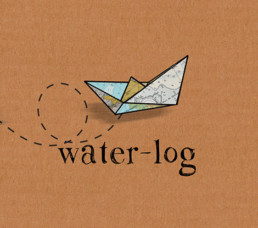So we talked about it, planned it and worried about it for so long that the actual Canal transit seemed like an absolute doddle (does this remind anyone of all our talk of the Bay of Biscay?).
We had decided to use a canal agent as our month in the San Blas left us with a mountain of administration back in the UK to deal with. However, our canal agent proved to be an absolute gem and arranged for our measurement (see previous post), our paperwork, our transit date, lines and tyres all to be done and taken care of within a day and a half. This left us with not a lot to do except hang out in the swimming pool at Shelter Bay Marina and spend some time with some cruising friends.
Transiting the canal is a momentous passage as it is so symbolic. The very presence of the boat in the Pacific Ocean means that we’ve really gone and done it now as we are so very far from home. But the excitement and the meaning all seem to be psychological as the transit it self could not have gone more smoothly.
The passage from the Caribbean side to the Pacific side usually takes 2 days although you can do it one from the other side. This has nothing to do with speeds but rather to do with the time the canal authorities schedule the small sailboats to go through. This is the real thing to always remember about the canal – we do not make them much money and we are like flies to them when compared to the big tankers that pay $40,000 to cross.
We left the marina and crossed the main channel to the canal and sat at anchor in ‘the Flats’, an anchorage where you wait for your canal advisor to come on board. Every boat is required to have an advisor supplied by the canal company, a skipper (James) and four able-bodied (i.e. fit and not drunk) linehandlers (Jess plus our buddies from s/v Mother Jones, Laurie, Damon and Damon’s brother Dylan). In January there are plenty of sailboats going through so the standard practice is for three to raft up together.
This is just what we did. There was a 50ft catamaran from Peru designated as the lead boat (the middle boat is always the biggest and most powerful) and we rafted up on its starboard side while a 36ft French monohull tied up to its port side. So, when we got to the Gatun locks (Atlantic side) about 4pm the two outer boats were thrown lines to attach to our own. These three locks raise the boat a total of 26 metres so the job of the linehandlers is to pull in the slack on the lines (bow and stern) as the water gets higher. With 4 people on board to do exactly that the whole process was a cinch. Once through the Gatun locks, around 5pm, we went onto a mooring buoy for the night in Gatun lake and everyone on board got a well-earned drink.
The next day starts at 6am with several hours of motoring and motor sailing down the channel through the lake. There were 28 miles to cover in total before the Pedro Miguel locks. We desperately wanted to see some of the famous Gatun lake crocodiles but to no avail. On approaching the locks, we re-formed our raft of three, and this time the lines would need to be slackened for us to drop 9 metres down at the Pedro Miguel locks and then all the way down to sea level at the Miraflores locks. We just had enough time to put a quick phonecall in so that friends and family could see us going through on the Miraflores cameras.
And that, dear friends, is really all the story there is. No damage was done to the boat, no panics or problems, the engine performed beautifully and everything worked like clockwork. We stepped out into the Pacific ocean and anchored off Panama City, our new skyline a forest of skyscrapers.
As a final note to anyone interested in learning more about the canal I cannot recommend highly enough a book called “The Path Between the Seas” written by David McCulloch which gives a very detailed account of both the French and American attempts and final construction of the canal.
